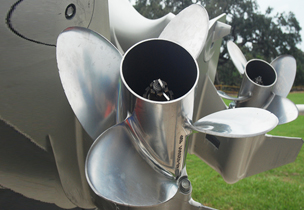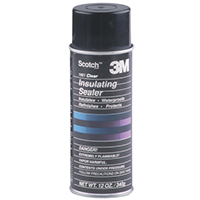Simple Ways to Protect your boat, Check the Propeller
Posted by Pacer on 13th Mar 2019


In order to get the most out of any boating experience, you need to make sure your boat systems are all functioning properly. Not one or two systems, but all of them and that includes the ones we tend to overlook. There are quite a few areas of a boat people tend to forget about. So often people take the propeller for granted. It’s out of sight, so it’s out of mind. Ignoring the propeller is a bad idea. It is literally one of the main parts of the propulsion system that makes your boat move. When your propeller isn't working properly, it doesn't matter how well everything else works, you won't be going anywhere. So how do you inspect your propeller for damage or signs of wear? The easiest thing to do is to look for obvious damage. Take a careful inventory of the blades to see if there are nicks, bends, gouges, corrosion of any other type of damage to the propeller. Even small bends will affect the way your propeller functions. If the damage is severe enough, your propeller will begin to vibrate when in use. This vibration will lead to all sorts of trouble and can lead to long term damage to your motor. Once you have inspected your propeller and are satisfied with its condition, move on to other parts of the system. Carefully inspect where the propeller connects to the motor itself. To be honest, you should be inspecting your propeller as part of your pre-launch routine. This way you're never stuck out on the water with a damaged propeller and no way to get back to shore. Checking it is easier than you may think. Throughout the boating season, remove the propeller and check for fishing line, debris, trash or any other material that may have worked its way into the propeller shaft. Do your best you remove any of the debris or trash you find using a small tool or similar instrument. If you notice a large number of dents or trash build up, it may be time to visit a repair shop for some answers.

Things to look for:
- Signs of Corrosion
- Nicks, bends or gouges
- Damage to the propeller shaft
- Trash or debris like fishing line tangled
- Be sure to inspect all points of connection
Using an insulating Sealer can protect your connections:

Sometimes the issue with a propulsion system can be electrical. The wires, terminals, or connectors may have suffered damage or become corroded which will undoubtedly have an effect on their ability to transmit electricity. In the case of splices, they are the most subject to damage and corrosion. Terminals and connectors are designed to withstand harsh environments, but splices are often done after the fact. Many times people leave them exposed to the elements which will always lead to long term issues. If you have exposed splices, be sure to protect them. This can be done in a variety of ways but the simplest way is to coat the splice with an insulating sealer. The best part about this type of solution is that it goes on easy and lasts for an extended period offering protection from moisture, rust, weather, acids and more.
A small tool can go a long way:
Often times when dealing with a propeller or similar part, there are small screws that will need to be removed in order to gain access to the shaft or internal components. This is where a multi-use tool such as this comes into play. More than just removing screws to access internal parts, this tool can be used for several other purposes as well. Let's say you have a fishing line or other debris caught in your propeller or even worse, in the propeller shaft, removing them may not be an easy task. There is a range of ways to get them out, but a simple method is to use a small tool to pull the debris out. Although this tool is meant for removing contacts from environmentally sealed connectors, is also works well in tight spaces where you need to pull something out. This way you can slide the hooked end into a shaft or similarly tight space, twist it around, and pull it back out removing the obstruction in the process. A small tool such as this will go a long way in a pinch.

